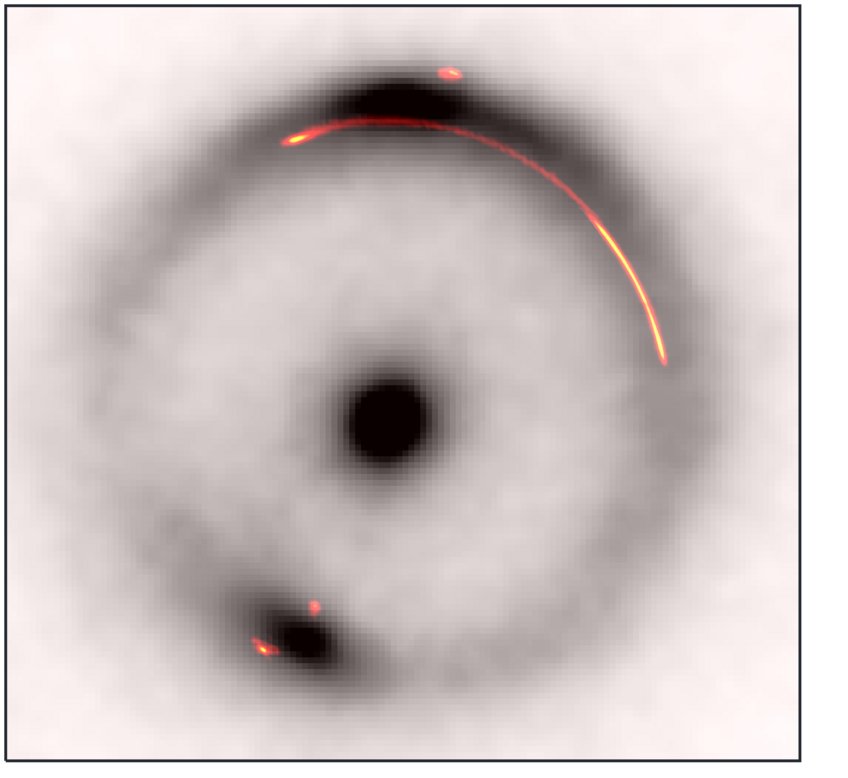
In a groundbreaking discovery, an international team of scientists has detected the lowest mass dark object ever measured in the universe. This mysterious entity, located approximately 10 billion light years from Earth, has a mass one million times that of the Sun. The findings are based on the gravitational effects observed on the light from a distant galaxy, offering new insights into the elusive nature of dark matter.
The announcement comes as researchers continue to explore the enigmatic properties of dark matter, a fundamental component of the universe that does not emit light but is crucial for understanding the formation and evolution of galaxies. The team utilized a network of radio telescopes, including the Green Bank Telescope, to form a virtual supertelescope capable of detecting even the faintest gravitational signals.
Gravitational Lensing: A Window into the Invisible
Gravitational lensing, a phenomenon predicted by Einstein’s Theory of General Relativity, plays a pivotal role in this discovery. It occurs when the gravity of a massive object, such as a galaxy, bends the light from a more distant object, creating distortions that can be analyzed to infer the presence of dark matter.
“Hunting for dark objects that do not seem to emit any light is clearly challenging,” said Devon Powell at the Max Planck Institute for Astrophysics and lead author of the study. “Since we can’t see them directly, we instead use very distant galaxies as a backlight to look for their gravitational imprints.”
Advanced Technology and Global Collaboration
The research team employed an extensive network of telescopes, including the Very Long Baseline Array and the European Very Long Baseline Interferometric Network. The data, processed at the Joint Institute for VLBI ERIC in the Netherlands, allowed the creation of an Earth-sized super-telescope. This advanced setup enabled the detection of subtle gravitational lensing signals from the dark object.
John McKean from the University of Groningen, who led the data collection, explained, “From the first high-resolution image, we immediately observed a narrowing in the gravitational arc, which is the tell-tale sign that we were onto something. Only another small clump of mass between us and the distant radio galaxy could cause this.”
New Algorithms for Unprecedented Discoveries
To handle the massive dataset, the team developed innovative modelling algorithms, which required the computational power of supercomputers. “The data are so large and complex that we had to develop new numerical approaches to model them,” noted Simona Vegetti at the Max Planck Institute for Astrophysics. This effort allowed the team to map the gravitational lensing effects and identify the dark matter clump.
The discovery aligns with the ‘cold dark matter theory,’ which suggests that galaxies are filled with clumps of dark matter. “Given the sensitivity of our data, we were expecting to find at least one dark object,” said Powell. “Having found one, the question now is whether we can find more and whether their number will still agree with the models.”
Implications for Dark Matter Theories
The implications of this discovery are profound. If more low-mass dark objects are found, it could challenge existing theories about dark matter and its distribution in the universe. The team is now expanding their search to other regions of the sky, hoping to uncover additional examples of such objects.
Gravitational lensing remains a crucial tool for astronomers, allowing them to measure the mass properties of cosmic structures. This technique, combined with the high-resolution imaging capabilities of the radio telescopes, offers a powerful method for probing the unseen components of the universe.
Looking Ahead: The Quest Continues
As the team delves deeper into their data, they aim to better understand the nature of the newly discovered dark object. If similar objects are found elsewhere and prove to be devoid of stars, it could lead to a reevaluation of some dark matter theories.
The ongoing research underscores the importance of international collaboration and technological innovation in advancing our understanding of the cosmos. As scientists continue to push the boundaries of what is known, the mysteries of dark matter remain a tantalizing frontier in the field of astrophysics.
“We expect every galaxy, including our own Milky Way, to be filled with dark matter clumps, but finding them and convincing the community that they exist requires a great deal of number-crunching,” said Simona Vegetti.





